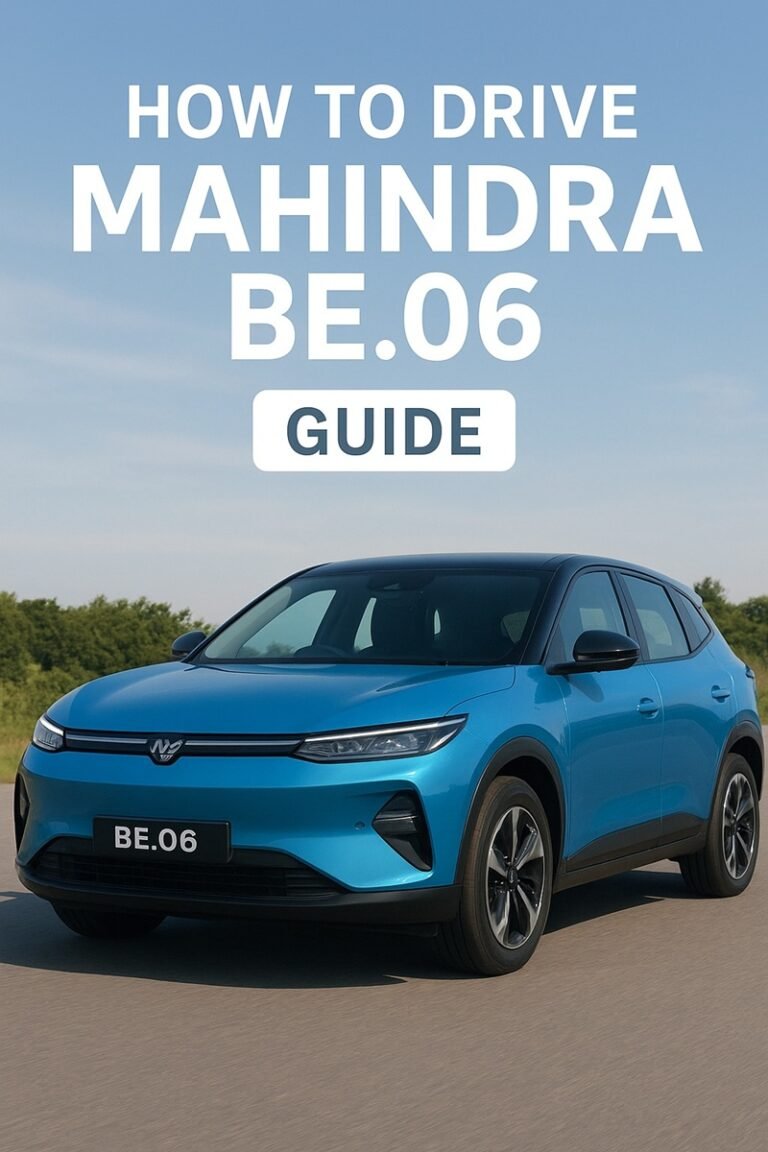
How to Drive volvo XC90
Master Everyday Driving, Controls, Safety Features, and Maintenance Tips for Your Volvo XC90 with Confidence.
Tips And Advise Volvo XC90, Driving the Volvo XC90 is designed to be an intuitive and smooth experience, especially for those new to premium SUVs. Once seated and buckled in, ensure the brake pedal is pressed before turning the start knob to start the engine. With the engine running, place your foot on the brake and shift the gear selector from ‘P’ (Park) to ‘D’ (Drive) for forward motion or ‘R’ (Reverse) for backing up. Ease your foot off the brake and gently press the rightmost pedal—the accelerator—to move. The middle pedal is the brake, used to slow down or stop the car. Always press the brake gently and progressively; the XC90’s brakes are sensitive and calibrated for safety.
Tips & Advice Volvo XC90 : The steering wheel is highly responsive and electronically assisted, making turns effortless even at low speeds. Use smooth hand-over-hand motion for turning, and let the wheel return naturally as you straighten out. When parking, use the electronic parking brake switch next to the gear selector, and enable Auto Hold if you’re in stop-and-go traffic.
Driving on different types of roads is made easier with the car’s selectable drive modes. For daily urban driving, Comfort or Eco mode helps save fuel and provides a relaxed ride. For highway trips or overtaking, Dynamic mode offers quicker throttle response. On hilly terrain or loose surfaces, switch to Off-Road mode (available in AWD variants) to increase traction and control. Always adapt your speed and steering input to the road conditions, especially in wet or icy weather.
For engine oil, Volvo recommends full synthetic 0W-20 or 5W-30 oil that meets ACEA A5/B5 or API SN specifications. It’s important to stick with Volvo-approved brands and change the oil every 10,000 kilometers or 12 months, whichever comes first. Using the wrong oil can affect engine performance and may void warranty coverage.
Volvo offers several onboard safety and driving aids to assist you, such as Pilot Assist, Adaptive Cruise Control, Lane Keeping Aid, and Collision Avoidance systems. Always remain attentive and keep your hands on the wheel, even when using these features. Check tire pressure monthly, use the correct fuel type (usually petrol or diesel, depending on the model), and follow the service schedule in your owner’s manual. The XC90 is built with safety and longevity in mind, but routine care and attentive driving are key to keeping it running optimally.
Driving a Volvo XC90 involves understanding both general car operation and some vehicle-specific features. Here’s a beginner-friendly, step-by-step explanation covering your queries:
✅ How to Drive a Volvo XC90
1. Starting the Car
-
Keyless Start (Most XC90s): Press the brake pedal and turn the engine start knob (between the front seats).
-
Ensure the gear is in P (Park) before starting.
2. Using the Controls
-
Handle (Steering Wheel): Turn left or right to control the direction. XC90s have power steering, so it’s smooth and easy.
-
Race (Accelerator): The rightmost pedal is the accelerator. Press it gently to move forward.
-
Brake: The middle pedal is the brake. Press it to slow down or stop. Volvo brakes are responsive—avoid sudden presses.
3. Driving Modes (Optional)
Use the Drive Mode Selector near the gear lever:
-
Comfort: For smooth city driving.
-
Eco: Fuel-efficient mode.
-
Dynamic: Sporty and more responsive.
-
Off-Road: For uneven terrain (AWD models).
-
Individual: Customize settings.
4. Transmission (Automatic)
-
D (Drive): For moving forward.
-
R (Reverse): For backing up.
-
P (Park): For parking.
-
N (Neutral): For idling without driving.
✅ Where and How to Drive
-
City Roads: Use Comfort or Eco mode; avoid aggressive braking or acceleration.
-
Highways: Dynamic mode gives better throttle response.
-
Hills/Off-Road: Use Off-Road mode if equipped, and drive slowly to maintain control.
✅ What Oil to Use
Volvo recommends:
-
Engine Oil: SAE 0W-20 or 5W-30 synthetic motor oil (check your specific engine model).
-
Use only Volvo-approved oils (ACEA A5/B5 or API SN/GF-5 or higher).
-
Oil change interval: Usually every 10,000 km or 12 months (whichever is earlier).
✅ Important Volvo XC90 Guidelines
-
Always wear your seatbelt and ensure passengers do too.
-
Check tire pressure regularly—XC90s often require around 35 PSI.
-
Use Auto Hold and Parking Brake in stop-and-go traffic.
-
Use adaptive cruise control on highways for a smoother drive.
-
Follow Volvo’s service schedule for engine, transmission, and safety system checks.
-
Never ignore dashboard warnings—Volvo cars are equipped with smart diagnostics.
Last Updated on 6 May 2025.
See also this: Tips & Advice Tata Punch: Complete Guide for Smooth & Safe Driving







